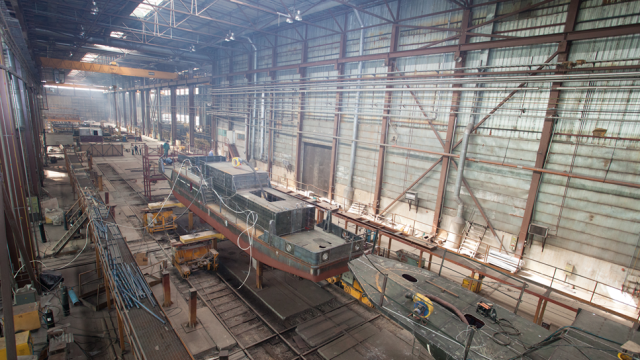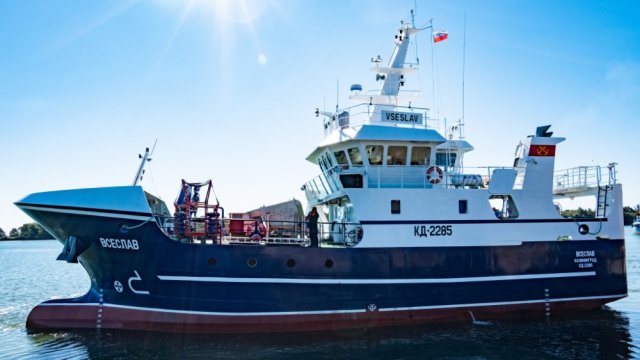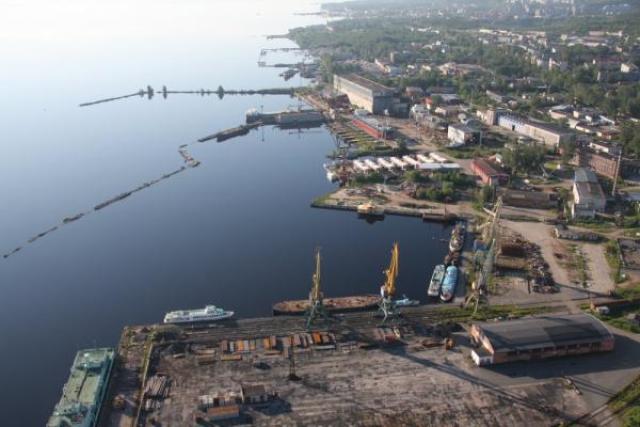The third decade of the XXI century brought changes to the conservative shipbuilding market. Giant design bureaus are forced to compete with teams of a dozen people who, thanks to the digitalization of design, have become able to perform the same work with minimal overhead. And companies that do not have their own shipyards are starting to build ships, but it is due to this that they are able to ensure the speed and serial production. The trends of decentralization were understood by the team of the Hardwork analytical group.Consulting .
How to build a ship without a dock
The key industry document – the "Strategy for the development of the shipbuilding industry until 2035" – sets rather ambitious goals: only for the domestic market, "it is necessary to build about 250 sea transport vessels and more than 1,500 river-sea class transport vessels, 1,640 fishing fleet vessels, more than 250 vessels and units of marine equipment of auxiliary and technical fleets, 90 research vessels, 24 icebreakers, as well as about 150 vessels and marine equipment for the development of offshore fields." In total, over a 15-year period – over 3,900 vessels, not taking into account the river fleet, military orders and potential export deliveries.
The average annual number of vessels put into operation, therefore, should be about 260 hulls. In the meantime, the indicators are far from desirable. The RRR and RMRS data for 2020 indicate the delivery of 116 vessels, for 2021 – 89 vessels. In 2022, another 20% fewer buildings were commissioned . At the same time, there is growth potential. So, in 2021, 124 vessels were laid, which is 35 units more than the number of commissioned ones. There are also enough projects under construction. For example, in 2022, according to the report "Diversification: Advanced Monitoring", the Russian design bureaus had 49 projects in the early stages (preliminary design, preliminary design) and 55 projects in the late stages (technical project, RCD).
 |
| The complex of thermal cutting of metals "Yenisei". |
| Source: Samussky SSZ |
Considering the reasons hindering the balancing of the indicators of the laid and delivered fleet, it is possible to highlight the slow pace of construction of the series. The largest shipyards, one way or another entering mass production, are limited by the number of berths, which forces them to work on orders sequentially. As a result, any problem with components or contractors that is on a critical construction path leads to delays not of one vessel, but of the entire series.
One of the solutions to this problem can be considered the concept of a distributed shipyard. Classically, as this concept is interpreted by the USC, a distributed shipyard is understood as a process in which "parts of a ship or vessel are created in parallel at several enterprises at once, after which they are connected at the final assembly point."
But there is another vision of this concept. This is the construction of a series of vessels of the same project at several sites at once under the management of a general contractor. A similar implementation can be seen in the production of furnishing vessels of project 3052 by the Marine Equipment Group of companies. At the same time, the general contractor does not use its own shipbuilding facilities at all, but uses four small shipyards in parallel: "Samussky SSZ", "Blagoverf", "Zhigalovskaya repair and maintenance base" and the shipyard of GC "R-Fleet". The vessels are built according to a single RKD and with a single supply of equipment from the general contractor. This, in turn, achieves the economic efficiency of the production of a series of vessels on a distributed basis. Interestingly, other shipyards did not even submit an application for the Rechvodputi tender.
 |
| The shipyard. |
| Source: Blagoveshchensk Administration |
The second illustrative example is a series of two small passenger ships of the IPCS commissioned by the STLC. The winner of the competition was IC "R-Fleet". However, only one of the vessels is being built on the company's own site, while the second was transferred to the Nefteflot shipyard. The manufacture and supply of key equipment to ships is also centralized, and R-Fleet is responsible for this.
Finally, the third example of decentralization is the research vessel TSK.550. The holder of the supply contract is Onega SSZ, and the actual construction is being carried out in the Tver Region at the Belogorodskaya Shipyard.
All these contracts imply the production of technically simple vessels of small displacement. However, the emerging experience of decentralization, which both performers and customers receive, can have a serious impact on the future of Russian shipbuilding. First of all, such an implementation of a "distributed shipyard" solves the problem of stretched deadlines for the delivery of the series. Secondly, a single purchase and supply of component equipment for the series, as well as the production of ships at regional shipyards with cheap labor and low non-target costs, makes the project cost-effective. And, finally, working in the "one window" mode in the future will allow the customer to solve issues arising at the operational stage more quickly.
All these factors, when expanding decentralization to larger and more complex projects, will put serious economic pressure on the largest state shipyards, which will have to change their approach to customer interaction and rely on key competencies, while simultaneously becoming cheaper and faster for shipowners. And here it is important to note that the approach of a single supply of component equipment gives economic efficiency only in the case of serial delivery. In the construction of head or single vessels, decision-making at the level of the head office, rather than a specific shipyard, in practice only slows down the processes.
The project costs as much as they are willing to pay for it
It is hard not only for large shipyards, but also for giant design bureaus. Small teams are coming to the market that are able to design the same vessels with much lower costs due to the active use of digital technologies and narrow specialization on a specific type of vessels. And if the gap between companies implementing the concept of a decentralized shipyard and classic shipbuilding sites will be reduced for many years, then small design bureaus are already stepping on the heels of unwieldy competitors.
What kind of vessels are designed by design bureaus with an average number of personnel of 10-30 people? If earlier the main business of such design bureaus was built around the river fleet and the orders of "private owners", today they design vessels for government customers, fishing companies and the largest shipowners.
According to the analytical report "Diversification: Advanced Monitoring" for the I–IV quarters of 2022, small design bureaus worked on the following types of vessels: eight trawler projects, two crab fishing projects, four passenger ship projects, two tugboat projects, one of them ice–class, one bulk carrier project, one transfer floating dock project, one project NIS, five projects of technical fleet vessels.
The economic efficiency of such design bureaus can be illustrated by such an example. One of the small design bureaus with an average number of employees barely exceeding 10 people received revenue of 44 million rubles in the previous two years ( data from the State Information Resource of Financial Statements). During this period, among other things, the Design Bureau created four projects of dry cargo vessels. These indicators can be compared with the cost of developing just one dry cargo vessel project, the state purchase for which was placed in 2019 with an initial price of 50 million rubles.
Interestingly, the output per person of small KB and KB giants differs slightly. The KB already given as an example, depending on the success of the year, had a production per person in the range of 1.1–2.8 million rubles. For comparison, let's take data from the annual report of the Northern PCB, where for 2020-2021 the output per person ranges from 2.3–2.8 million rubles.
But is the low price of the project justified for customers, or do you have to pay for it with the quality of the study? This is the most difficult question, which can be answered only by indirect signs – for example, by public statements of customers.
 |
| The trawler Vseslav. |
| Source: Adomat LLC |
In particular, the head of the Marfish company described the Vseslav vessel designed by the Adomat Design Bureau (the average number of KB personnel, according to the service "ru/card/ec4c7f147109d78f84ce96311bfb8dae/" target="_blank" rel="nofollow">Card file ", – 10 people): "Our trawler can carry three times more fish products than old models of similar vessels."
Another quote belongs to the director of the company "Mag-Sea International": "Quality – we crawled through the ship from the tank to the stern, we are absolutely satisfied with the approach." We are talking about the crab "Omolon" project 03141 – the joint work of LLC "Viking SK" and KB "Ship".
Thus, the largest design bureaus today hold the leadership in the segments of the design of the military fleet, ships with a high ice class, equipment for the development of the shelf. At the same time, the commercial, technical and fishing fleet is becoming a field of fierce competition, where small design bureaus look economically attractive. The volume of orders in this segment will be held only by those "giants" who will be able to enter large-scale construction according to their projects, which will give the customer confidence in the economic efficiency and reliability of the vessel and neutralizes the advantages of small design bureaus.
The considered changes in the industry – both decentralized shipbuilding and design by small design bureaus – look like a negative trend in the eyes of today's market leaders. But at the same time, they indicate that the Russian shipbuilding market is developing and adapting to the requirements of shipowners, the satisfaction of whose needs, ultimately, is the main value.

